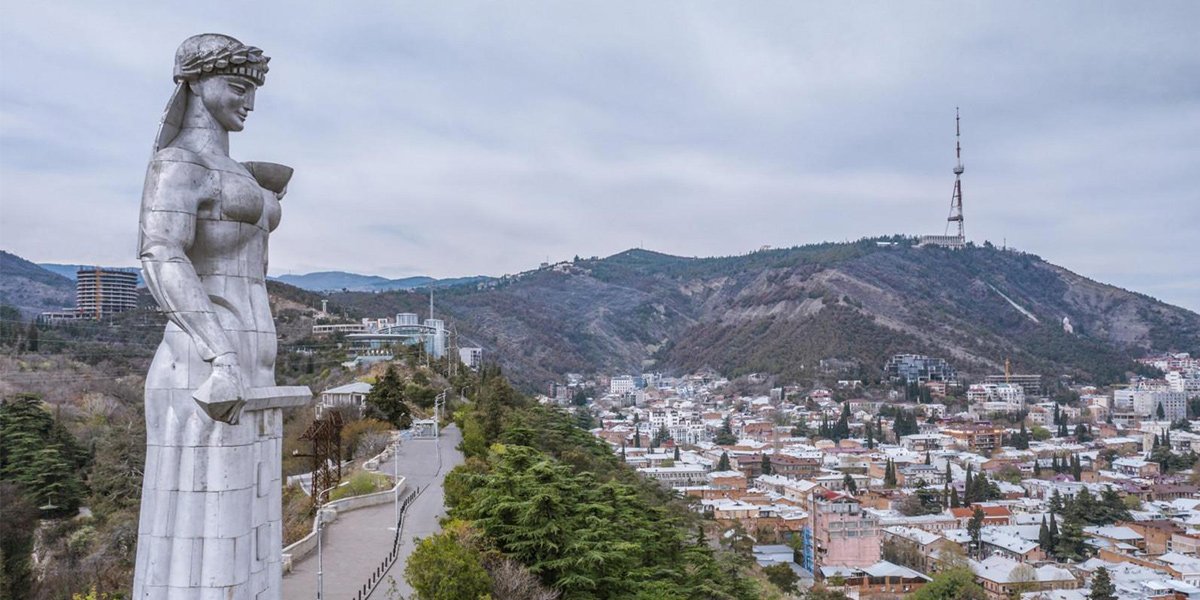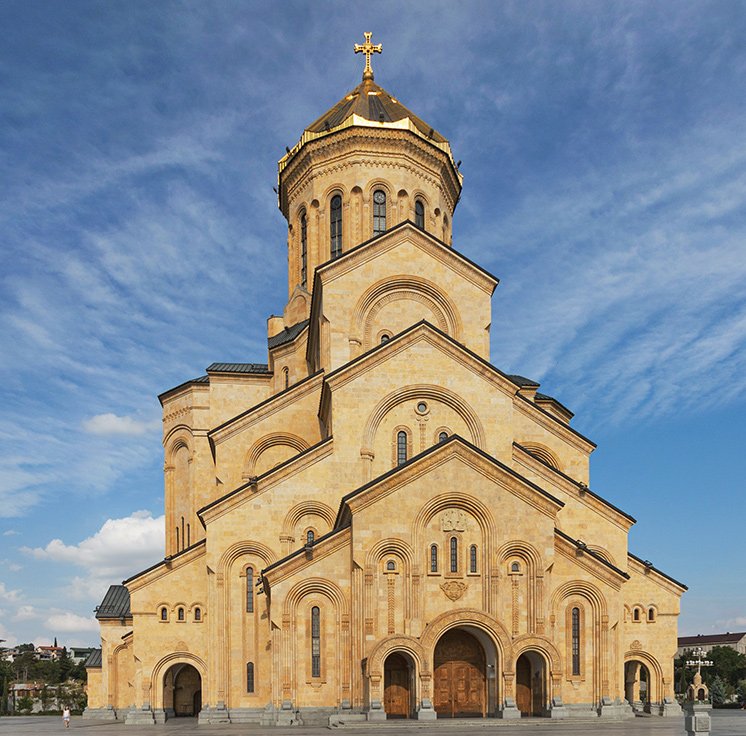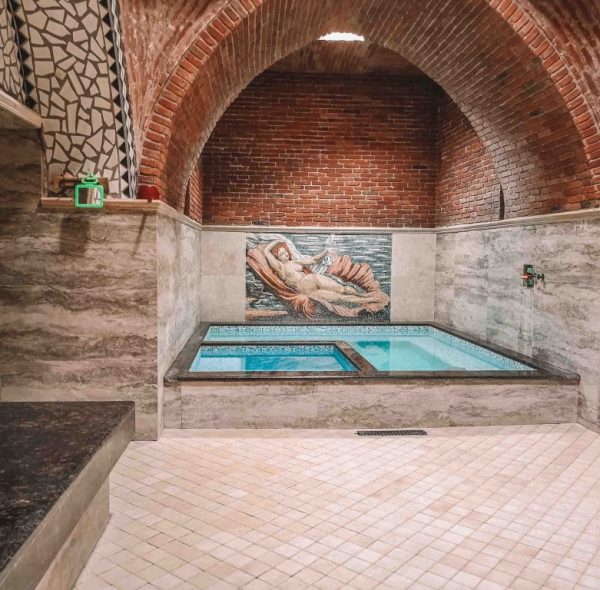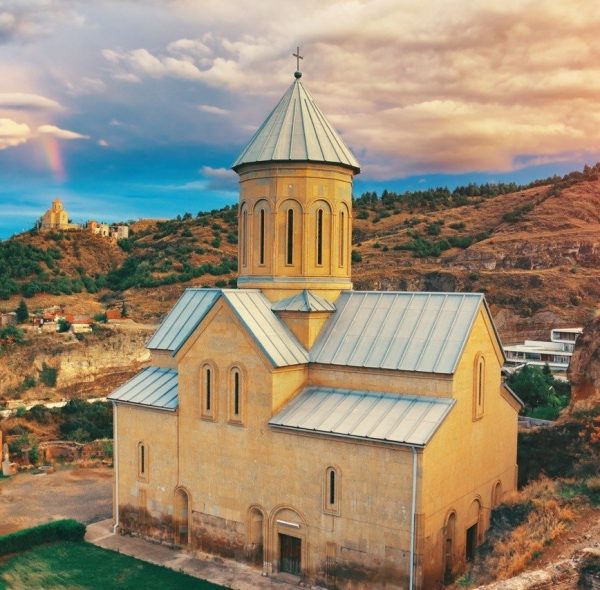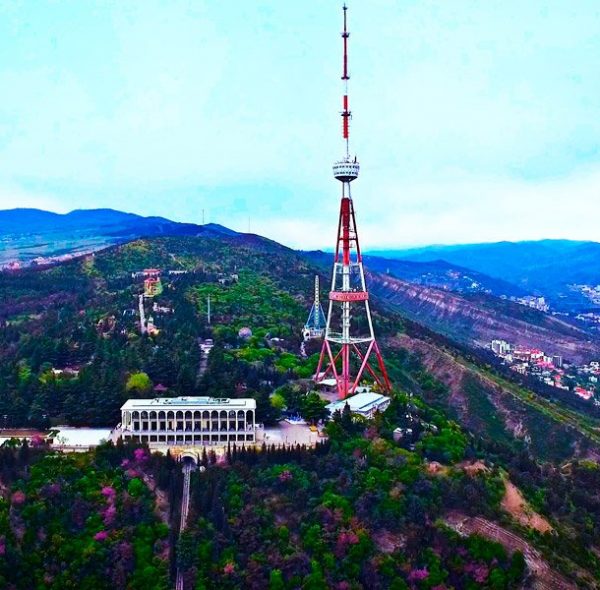Tbilisi is the capital of Georgia. Its cobblestoned old town reflects a long complicated history with periods under Persian and Russian rule. Its diverse architecture encompasses Eastern Orthodox churches, ornate art nouveau buildings and Soviet Modernist structures. Looming over it all are Narikala, a reconstructed 4th-century fortress, and Kartlis Deda, and iconic statue of the “Mother of Georgia’’
Tbilisi “Kartlis Deda’’
Kartlis Deda ( Mother of a Kartli or Mother of Georgian), is a monument in Georgia’s capital Tbilisi, The statue was erected on the top of Sololaki hill in 1958, that year Tbilisi celebrated its 1500th anniversary.
Prominent Georgian sculptor ”Elguja Amashukeli” designed the twenty-meter aluminum figure of a woman in Georgian national dress. She symbolizes the Georgian national character: in her left hand she holds a bowl of wine to greet those who come as friends, and in her right hand is a sword for those who come as enemies.
Tbilisi “Holy Trinity Cathedral’’
Built in year 2004, the Holy Trinity Tsminda Sameba Cathedral is also called the symbol of new Georgia. The beauty and sizes of cathedral are indeed breathtaking, and rises magnificently on the hill of the St. Ilya, on the left bank of the Kura River. Sameba is the highest church in Georgia.
It is 101m high. Sameba Cathedral was built with grandiose scope. Its golden dome is practically seen from any point in Tbilisi. The cathedral is part of the entire complex including residence of the Patriarch and a monastery, school of theology and academy, hotel and the complex consisting of nine chapels, five of which are located under the ground.
Tbilisi ‘’Botanical Garden’’
There is a beautiful few centuries old garden in the historical part of Tbilisi. Once during the times of ancient states, this territory belonged to royal gardens. References on this can be found in the manuscripts of travelers dating back to the 17th century. Gardens transformed into arboretums with the time. It is estimated that it was founded in 1845 in its present look. This verity makes it one of the oldest botanical gardens in the post-Soviet area.
Tbilisi botanical garden has more than 3500 kinds of plants. Its territory of 128 hectares presents both, local and world flora. There are a lot of pavilions, shady alleys, few waterfalls and mounting bridges scattered around the garden for comfort of visitors. It is an ideal spot for walking and cycling.
Tbilisi ‘’Sulfuric Baths’’
The sulphur baths are intimately connected with Tbilisi. It is said that Tbilisi was built here because of the hot springs. High in sulphurs and other minerals, with a constant temperature of 38C to 40C, the waters have long been used as a therapeutic aid for a range of ailments including skin conditions and arthritis.
Baths are built in classic oriental style and They are low stocky buildings covered from above by semicircular domes with glass apertures in the centre which served as windows lighting the interiors because the baths themselves are below the ground level.
Tbilisi baths were destroyed and restored many times. These baths exist now with small architectural changes made in the 19 th century.
Tbilisi ’’Bridge of Peace’’
The Bridge of Peace is a Bow-shaped pedestrian bridge, a steal and glass construction illuminated with numerous LEDs, over the Kura River in downtown Tbilisi, capital of Georgia.
The bridge which stretches 150 meters (490 ft.) over the Kura River was ordered by the City Hall of Tbilisi to create a contemporary design feature connecting Old Tbilisi with the new district. The official opening took place on May 6, 2010 . The bridge stretches over Kura River providing a view of Narikala Fortress on one side, and Baratashvili Bridge and Presidential Office on the other.
Tbilisi ‘’Narikhala Fortress’’
The Holy Mountain Mtatsminda hosts the fragments of ancient Narikhala fortress. It is the most known and ancient monument of Tbilisi ‘s antiquity; the townspeople call it “the heart and soul of the city”. The date of construction of the fortress is the 4 th century.
Historians assert that Narikala standing on the Silk Road was the most fortified and impregnable of all in Tbilisi . In 1827 the fortress was destroyed by the earthquake and since then the citadel has not been restored completely. But the surviving stone towers of Narikala remain the silent witnesses of the ancient city’s history. And tourists can learn the history of the castle and can see the most beautiful scenic views from the top because of its place at the top of the hill and also can capture the most beautiful images.
Tbilisi ‘’Mtatsminda’’
Mtatsminda Park is a family amusement facility located atop Mount Mtatsminda overlooking the Georgian capital Tbilisi. It offers water slides, a roller-coaster, and a big Ferris Wheel at the edge of the mountain, offering a splendid view over the city.
Tbilisi ‘’Turtle Lake’’
Turtle Lake Located in the semi-mountainous area and is a popular tourist destination and also destination for families on the weekends in order to practice some water sports such as swimming, diving and get a recovery in the summer on a hot day, as you can rent a boat and go on a nice stroll around.
Tbilisi ‘’Museum Of Fine Arts’’
One of the tourist attractions in Tbilisi contain more than 140,000 Georgian masterpiece in a double place of ancient and modern art and featuring Georgian and Russian, European and Eastern collections.


